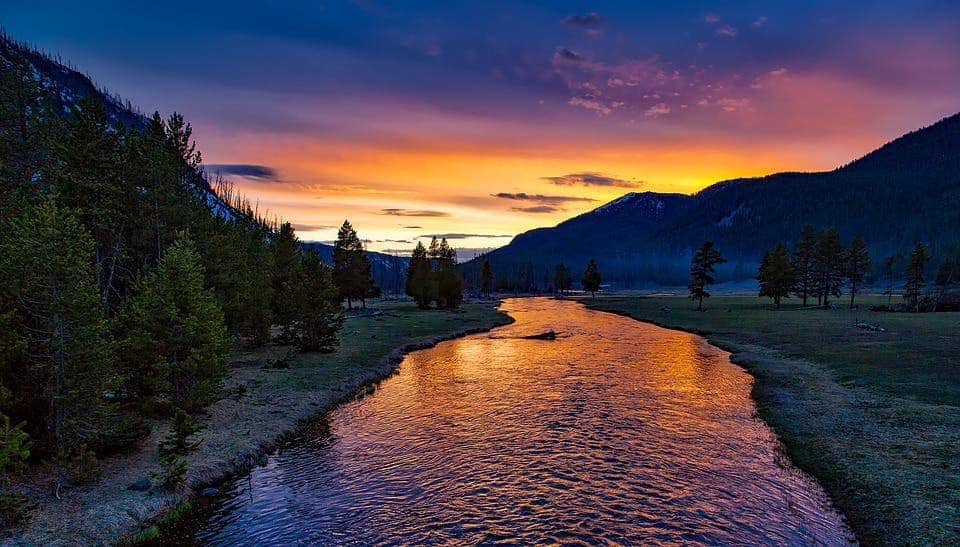In 2011, America’s national parks said farewell to plastic water bottles that had been polluting the nation’s supposedly pristine area. It wasn’t for good though. In yet another decision that goes against common sense, President Trump has lifted the six-year ban on plastic bottles inside national parks. The decision is seen by environmental groups and campaigners as yet another example where corporate greed trumps the wishes of the citizens and their right to a clean and sustainable environment.
Bottled water: the healthier choice
“While we will continue to encourage the use of free water bottle filling stations as appropriate, ultimately it should be up to our visitors to decide how best to keep themselves and their families hydrated during a visit to a national park, particularly during hot summer visitation periods,” Acting National Park Service (NPS) Director Michael Reynolds said in a statement released Wednesday.
The decision undoes a 2011 directive set forth by the Obama administration that would discourage the sale of bottled water inside America’s 417 federal parks. The directive, which allowed bottled soft drinks and juices, was seen a praised move meant at reducing plastic pollution inside the National Park System. The decision didn’t work in all places as only 23 out of 417 parks found it practical to install water dispensers. Even so, these include some of the most famous and biggest parks like the Grand Canyon and Zion national park, both of which attracted more than 10 million visitors last year.
Now, this landmark ban on plastic bottles has been reversed by the Department of Interior headed by Trump appointee Ryan Zinke, who didn’t seem to need much convincing. Only a couple of months of lobbying by the International Bottled Water Association were enough to sway Zinke who didn’t find it odd at all that the group thought the ban “removed the healthiest beverage choice at a variety of parks while still allowing sales of bottled sweetened drinks.”
Another argument set forth by the IBWA is that parks spent $288,900 on ten water stations at the Grand Canyon and $447,200 on three water stations at Zion. These could harbor dangerous bacteria unlike bottled water, the IBWA claimed.
There was no mention, however, of the billions worth of damage to people’s livelihood and wildlife as a result of plastic pollution that litters the outdoors and contaminates the oceans where it wreaks havoc. The IBWA statements also slyly avoid another economic metric: their own profits. While the lobby group is quick to point out how a couple thousand dollars worth of taxpayers’ money are being ‘squandered’, what the IBWA is actually looking after is the hundreds of millions its sponsors are losing yearly. The IBWA also doesn’t mention how much the government has to pay to clean up the mess left by millions of Americans who go outdoors in the nation’s park. The Grand Canyon national park estimated in 2011, before it banned plastic bottles, that these accounted for 30% of their recycled waste. Eliminating this waste would decrease the amount of money the park spent on recycling removal by as much as 30%, the US Department of Interior, National Park Service stated at the time. Some of this pollution can never be recovered, which is why there was a ban in the first place.
A walking conflict of interest
“National parks, as premier tourist destinations, use taxpayer dollars to manage the burden of discarded plastic water bottles,” an earlier memorandum by the Park Service’s facility management division noted. “Notably, this is a relatively new financial burden, with global sales of bottled water quadrupling between 1990 and 2005.”
Acting Park Service director Michael Reynolds, however, thinks that “ultimately it should be up to our visitors to decide how best to keep themselves and their families hydrated.” Oddly enough, even if the visitors unwillingly hurt themselves and the great outdoors that they supposedly cherish so much by buying and discarding plastic bottles.
In any event, the fact that Reynolds and Zinke were so easily persuaded has been picked up by many environmental groups to whom all of this smelled of corporate interest.
“The reversal is but a symbol for this administration’s larger attacks on environmental safeguards and protection of public lands,” said Athan Manuel, public policy director for the Sierra Club.
The ban undo follows shortly after a controversial figure, a lawyer named David Bernhardt, was appointed as deputy secretary at the Department of the Interior a few months back. Bernhardt formerly worked with Brownstein Hyatt Farber Schreck, which specialized in water-related litigation and previously represented Nestlé Waters. With this in mind, some senators have called Bernhardt ‘a walking conflict of interest’.
.@realDonaldTrump’s nominee for Dep Sec of the @Interior, David Bernhardt, is a corporate insider & walking conflict of interest. pic.twitter.com/B53vzmQFCp
— Elizabeth Warren (@SenWarren) July 24, 2017
This is just the latest measure in a long-list of decisions made by Trump and his acolytes that seem hell-bent on ruining the environment. National Geographic has a running list you can visit, which includes greenlighting the Dakota and Keystone pipelines, appointing a climate change denier and overall incompetent as head of the EPA (Scott Pruitt), reconsidering fuel efficiency standards, harassing environmental scientists, exiting the Paris Agreement, and much more.










